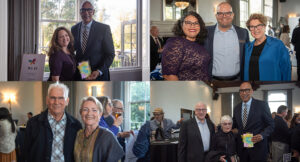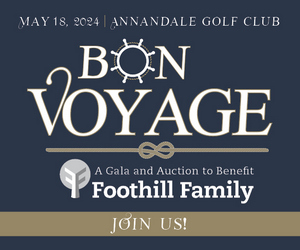HRC Fertility in Pasadena is offering treatment of what has been perceived as a rare kind of abnormality among women of childbearing age. In reality, this disease is quite common.
The development of scar tissue (adhesions) inside the uterine cavity can develop after any type of uterine surgery, but most commonly following a D & C (dilation and curettage). When it is associated with pelvic pain, infertility, repeated miscarriages and/or reduced or absent menstrual flow, this condition is called Asherman’s Syndrome.
Dr. Charles March, who developed a device in 1995 to prevent scar reformation following intrauterine surgery, says there are at least three main misconceptions about Asherman’s Syndrome that have to be corrected: that is a rare condition, that treatment is usually unsuccessful and that the outcome of pregnancies which occur after treatment is poor.
He currently treats women with the condition at HRC Fertility in their Pasadena office, as well as conditions that can cause repeated miscarriages and premature labor such as congenital abnormalities of the uterus and fibroid tumors.
“Unfortunately, if you were to speak to most gynecologists, the story would be ‘almost nobody has Asherman’s Syndrome, it’s extremely rare, uterine scarring doesn’t occur,’ and that’s not true,” Dr. March said. He adds medical reports have shown that the condition isn’t rare at all. In fact, he says, the reports indicate exactly the opposite.
He said there are newer instruments that permit intrauterine surgery to be performed more safely. One of these is a morcellator, which facilitates a purely mechanical removal of polyp or pregnancy tissue.
“In February, 1974 we began performing surgery with a telescope (called a hysteroscope) placed inside the uterus to treat this condition. Treatment of intrauterine scarring is performed very frequently in medical centers all over the world. Some of the changes in uterine surgery can make the risk of uterine injury even more common,” March said. “Therefore, those of us who are doing this kind of surgery are very busy. I’ve performed more than 10,000 hysteroscopies in my career. More than 3,000 of them have been for Asherman’s Syndrome.”
Dr. March also said another misconception about Asherman’s Syndrome is that it is caused by an “over-aggressive” D&C (a procedure that doctors use to remove tissue from inside the uterus, to diagnose and treat certain uterine conditions or to clear the uterine interior of retained tissue after a miscarriage, abortion or delivery). He said a review of medical records of those who developed scarring after a D&C “do not suggest that the surgery was other than routine.”
March also wants to correct the myth that treatments for the condition are rarely successful.
“Over the last 45 years, more than 2,400 patients with uterine scarring who I have treated have gone onto have one or more successful, uncomplicated pregnancies,” he said. “The keys to success are meticulous surgery, hormonal therapy to promote uterine healing, the use of a specially designed uterine balloon to reduce the chance of scar reformation and follow-up to prove cure prior to recommending that another pregnancy be attempted.”
Dr. March and other doctors use a variety of medications and often place platelet-rich plasma inside the uterus in order to stimulate endometrial healing and growth. He hopes one day stem cells will improve outcomes.
“Right now platelet-rich plasma can induce growth, kind of wake up that lining again and make it grow,” he continued. “And so this is a multi-faceted approach: taking the uterus, which is significantly damaged, making it normal or almost normal. The key is, improve normalcy before asking that patient to try to conceive, irrespective of how that pregnancy might be accomplished.”
Dr. March, a U.S. Navy veteran, and a physician recognized as one of Pasadena’s Top Doctors, completed his fellowship in Reproductive Endocrinology and Infertility at USC. He said his practice has been divided between teaching at USC – full-time until 2003 and part-time since then, private practice and research.
“We’ve been able to do great things. It’s a very, very rewarding field to be able to participate in a couple’s happiness,” March said. “Personally, I get letters from patients now whose children are 40 years of age and they still send me a Christmas card. This level of appreciation doesn’t occur in any other specialty in medicine, is so wonderful and keeps all of us focused on improving treatment and developing new techniques which will improve results.”















